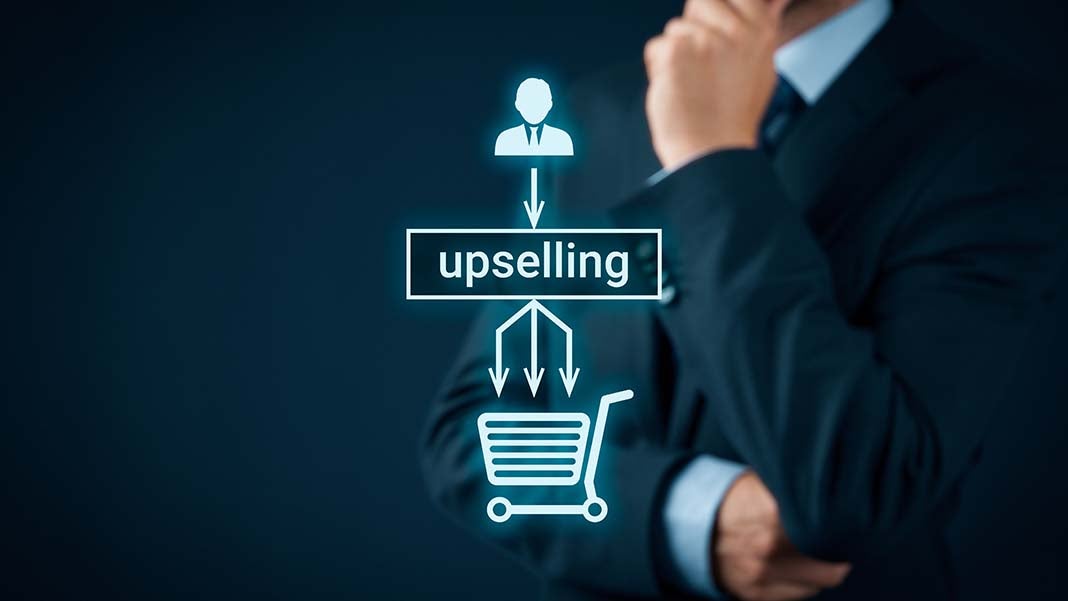12 Helpful Cross-Selling and Upselling Strategies for E-Commerce Success
Upselling and cross-selling are essential sales techniques for e-commerce businesses that are aiming to increase revenue while enhancing their customers’ shopping experience. Upselling involves encouraging customers to purchase a more expensive or more premium version of a product they are considering, offering added value in the process.
Cross-selling, on the other hand, suggests related or complementary products to the customer's main purchase, enhancing their overall satisfaction. While these techniques can significantly boost profits, implementing them can be a challenge for e-commerce businesses.
For one, digital stores typically lack opportunities to have personal interactions with customers, which can make it difficult to determine their market’s preferences and needs. For another, because buyers are typically bombarded by information and options online, they don’t always notice or appreciate upselling or cross-selling suggestions when they are shopping. These challenges, however, do not mean that cross-selling and upselling are out of the question for online businesses. Here’s a list of strategies that e-commerce enterprises like yours can use to effectively cross-sell and upsell.
Strategies for Cross-Selling

Online businesses have a better chance of selling products that complement goods in a customer’s cart by implementing the following cross-selling strategies.
Offer Product Bundles
To implement product bundles successfully, curate related products that enhance each other's value or offer cost savings when purchased together. Ensure that the bundle makes sense to the customer and is easily discoverable on your e-commerce.
For instance, you can show a button to add the bundle to the cart in the product pages of the bundle’s individual components. By showing the bundle before directing buyers to the payment gateway Shopify- or WooCommerce-based websites like yours, you’re giving your customers the chance to quickly update their orders before completing their transactions. To build up the bundle further, highlight practical benefits such as cost savings or convenience. Use colorful product descriptions as well to entice customers to choose the bundle over individual items.
Show Items That Are "Frequently Bought Together"
Utilize e-commerce features that allow you to offer "Frequently Bought Together" recommendations. This feature automatically suggests complementary products based on customer data, making it more likely for different demographics to see items that they typically buy or prefer to purchase in one go.
Make sure these recommendations are prominently displayed on product pages to catch the customer's attention. Consider testing as well to optimize the placement and design of these recommendations for maximum effectiveness.
Suggest Complementary Products
When suggesting complementary products, analyze your product catalog and identify items that naturally pair well with others. Incorporate these suggestions into the product pages and the checkout process. If you can show the list of complementary products before the customers can initiate the checkout process, for example, then you’ll make it easy for buyers to add the said items to their carts. To use this strategy effectively, explain how purchasing the suggested items enhances the main purchase.
You could even go one further by implementing kitting and assembly as part of your supply chain, creating a value added kit that bundles products which complement each other into a single package. As well as convincing customers to place larger orders, it’s also advantageous at your end because it can reduce picking errors and minimize costs, amongst other perks.
Highlight Customer Reviews and Ratings
Leverage customer reviews and ratings to boost cross-selling efforts and sway buyers into checking out your store’s complementary products. This can be done by encouraging your customers to leave reviews and ensuring that these reviews are prominently displayed on product pages. Include a "Customers Also Bought" section featuring products with high ratings and positive reviews. The testimonials left by your verified customers can help convince prospective buyers to commit to their orders and explore products that can enhance their purchasing experience.
Provide Personalized Recommendations
Implement personalization algorithms that analyze customer behavior and past purchases so that your business can come up with tailored cross-sell recommendations. Use machine learning and data analytics to refine these recommendations and ensure their continued relevance over time. Meanwhile, ensure that customers have the option to easily dismiss or accept these personalized suggestions so that they can maintain a positive shopping experience.
Strategies for Upselling

Using the following upselling strategies can increase your business’s chances of convincing its customers to switch to a premium version of their respective purchases.
Make Use of Tiered Pricing
Implement tiered pricing structures that offer customers options with varying features, benefits, and price points. Clearly communicate the value of each tier and highlight the advantages of higher-priced options. Use detailed descriptions and comparison tables to assist customers in making informed decisions. Also consider offering limited-time promotions or discounts to encourage customers to choose a higher-tier option.
Offer Product Upgrades
When presenting product upgrades, emphasize the enhanced features or capabilities of the higher-priced version. Utilize compelling words and visuals to showcase the benefits and advantages of upgrading. Lastly, make it easy for customers to compare the standard and premium versions, and provide clear pricing information so they can make informed purchasing decisions.
Encourage Frequent Shopping with Rewards
Establish a loyalty program that rewards frequent shoppers with discounts or exclusive perks. Encourage customers to create accounts so that they, too, can participate in the program and unlock its benefits. Communicate the potential savings and special offers that loyal customers can receive to motivate them to keep bringing their business to your store.
Utilize Cross-Channel Promotions
Leverage multiple marketing channels, including email campaigns, social media, and retargeting ads, to promote upsell offers to existing customers. Using automated image generation tools to automate banners and social media graphics creation is strongly recommended to increase your productivity and to highlight the value of upgrading, and craft personalized messages to buyers. Also, include calls-to-action to your campaign materials that direct customers to the product pages where they can explore and purchase higher-tier options.
Hold Limited-Time Offers and Sales
Create a sense of urgency and exclusivity with limited-time upsell offers. Clearly communicate the time-sensitive nature of the promotion, motivating customers to make a decision quickly. You can do this by using countdown timers and persuasive messaging in your marketing materials that emphasize the urgency of the sales. Ensure that the limited-time offers align with customer preferences and are genuinely beneficial to your target audience.
Highlight the Premium Item’s Value Proposition
When using value proposition in upselling, clearly articulate the unique benefits and added value that customers will receive by choosing the higher-priced option. Highlight how the premium version enhances their experience, solves their problems more effectively, or provides superior quality. Maximize the use of words and visuals to emphasize the value of the upgrade, and consider offering a satisfaction guarantee to alleviate any concerns customers may have about investing in the higher-tier product.
Use Data to Personalize Upselling
Implement personalized upselling strategies by leveraging customer data and behavior. Analyze their past purchases and preferences to recommend products or services that align with their interests. Craft tailored content that resonates with each customer segment and use dynamic content in emails or on your website to present personalized upsell options.
Additionally, allows customers to easily modify or decline the upsell suggestions, ensuring that the experience feels customized rather than pushy. Personalized upselling can significantly enhance the likelihood of successful conversions and customer satisfaction. Aside from adopting a full-featured WooCommerce or Shopify payment gateway, like Maya Checkout if your business is based in the Philippines, there are also numerous methods available to leverage upselling and cross-selling in order to improve your customers' shopping experience and boost your average order value even more.
Conclusion
There is a wide array of free Shopify apps and WooCommerce plugins at your disposal that will let you implement cross-selling and upselling strategies for your customers. When seamlessly integrated into the e-commerce shopping journey, these cross-selling and upselling strategies can effectively increase average order values as well as enhance customer experiences. The key is to strike a balance between presenting opportunities for upgrading and upselling and maintaining a positive user experience throughout the customer journey. This way, every completed transaction can be a win-win for buyers and customers.







